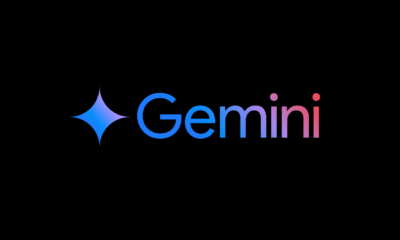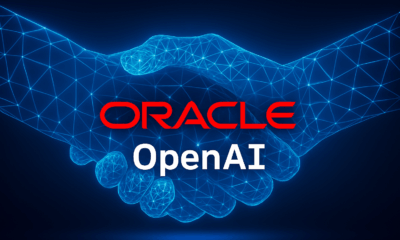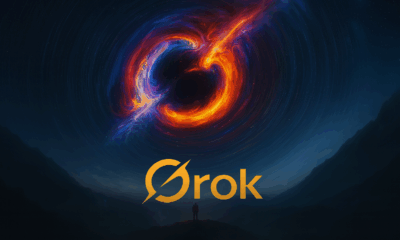News
DeepSeek Undone: A Deep Dive into Global Bans, Motivations, and What Lies Ahead
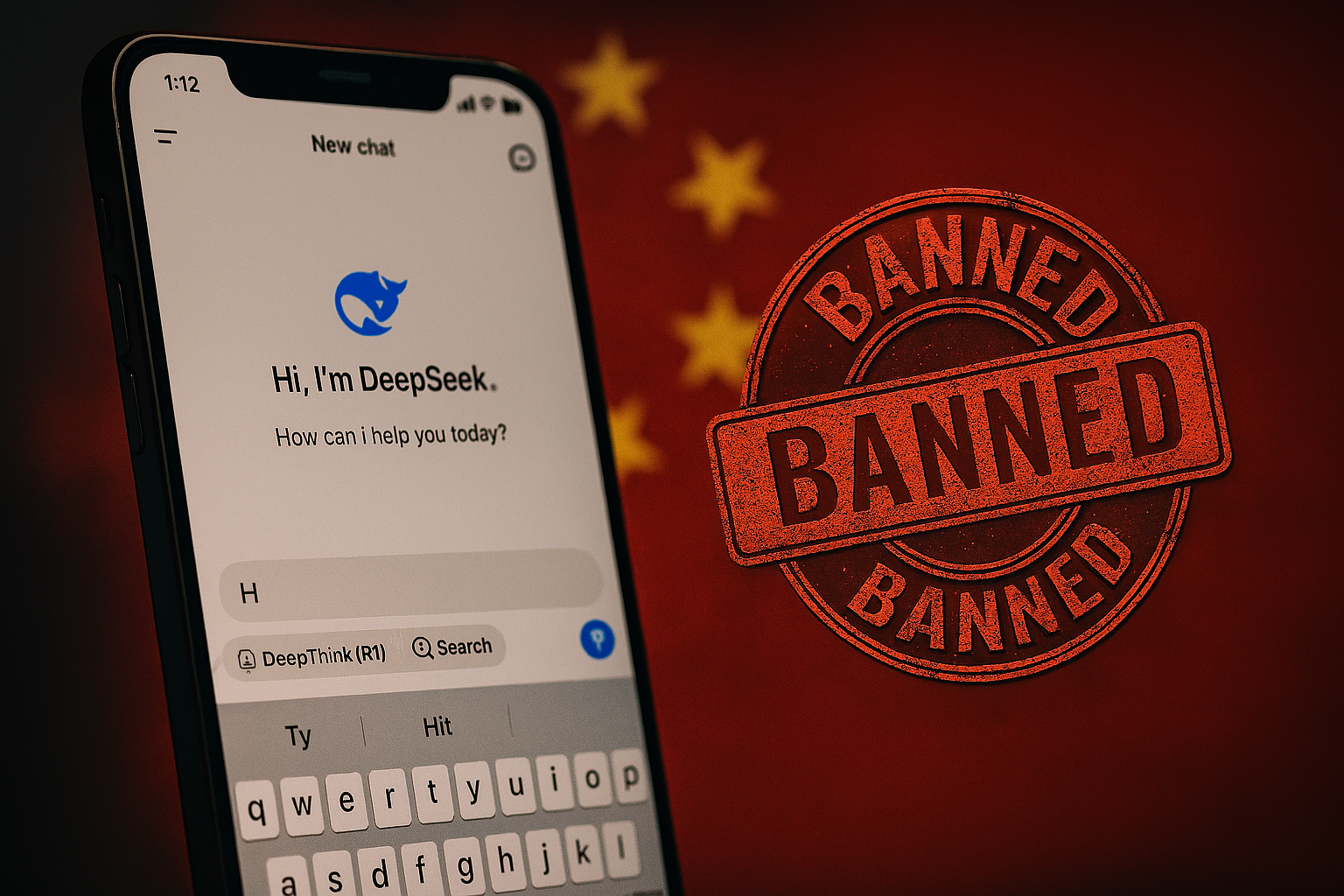
- Share
- Tweet /data/web/virtuals/375883/virtual/www/domains/spaisee.com/wp-content/plugins/mvp-social-buttons/mvp-social-buttons.php on line 63
https://spaisee.com/wp-content/uploads/2025/07/deep-1000x600.png&description=DeepSeek Undone: A Deep Dive into Global Bans, Motivations, and What Lies Ahead', 'pinterestShare', 'width=750,height=350'); return false;" title="Pin This Post">
When DeepSeek’s R1 model launched in January 2025 and rapidly climbed to the top of the U.S. iOS App Store, it signaled a seismic shift in the AI landscape. Offering performance rivaling GPT-4 at a fraction of the cost, this China-based startup was poised to disrupt the global chatbot market. Yet the triumph was short-lived. Within weeks, governments across the world began instituting bans, launching investigations, and pulling DeepSeek from official channels. The reasons were multifaceted—privacy violations, national security concerns, data transfers, and ideological censorship among them.
This global backlash raises critical questions about the intersection of technological innovation, international governance, and the geopolitics of artificial intelligence. What led to DeepSeek’s swift fall from grace? Where has it been banned and why? And what does this wave of opposition mean for the future of the company—and for Chinese AI more broadly?
The Worldwide Pushback: A Tally of Restrictions
Italy acted first, with its data protection authority ordering the removal of DeepSeek from both Apple and Google app stores by late January 2025. This decision stemmed from mounting concerns over the company’s data handling practices, which regulators feared violated Europe’s General Data Protection Regulation. Italy’s move was echoed soon after by other EU member states.
Germany took one of the most aggressive stances. Meike Kamp, Berlin’s Data Protection Commissioner, issued a formal complaint asserting that DeepSeek illegally transferred user data to China without sufficient safeguards under GDPR Article 46(1). The German regulator formally reported DeepSeek to both Apple and Google, requesting the app’s removal from German stores. The action followed DeepSeek’s failure to provide detailed responses to compliance demands issued in May 2025.
Several other European nations, including the Netherlands, Ireland, France, Luxembourg, and Portugal, also began regulatory probes into the app’s data practices. In the Czech Republic, the backlash escalated to a full government ban. On July 8, 2025, Prime Minister Petr Fiala announced that DeepSeek would be banned across all public administrative bodies. Czech authorities raised the alarm over DeepSeek’s potential for data exfiltration, warning that Chinese law could compel the company to share sensitive user information with the Chinese government.
Across the Asia-Pacific region, bans and restrictions emerged rapidly. In Taiwan, the Ministry of Digital Affairs banned the use of DeepSeek in all government agencies and public schools. Officials cited information security risks as the principal justification. South Korea’s Personal Information Protection Commission reported that DeepSeek had transferred data from more than a million Korean users to Chinese servers without proper consent. The commission suspended new downloads of the app in February 2025 and directed numerous public institutions to block it altogether.
Australia took an equally hardline stance. In February, the Australian government banned the use of DeepSeek on all public-sector devices. The announcement followed the findings of a national review, which concluded that the app posed a credible threat to national security. The government warned that DeepSeek might act as a vector for state-sponsored surveillance or cyber interference.
In the United States, multiple federal agencies, including the Navy, the Department of Commerce, and the National Security Council, banned DeepSeek from government devices. These decisions came amid growing unease about foreign access to proprietary data and the potential for surveillance. Several states—including Texas, New York, and Virginia—followed suit, introducing state-level bans on government use of the app. Meanwhile, members of Congress and the U.S. House administrative arm issued public warnings against DeepSeek.
By mid-July 2025, the app had been removed from app stores or barred from public systems in at least 15 countries. In others, investigations are ongoing, with regulators weighing further restrictions. The scope of the backlash, cutting across continents and political alliances, speaks volumes about the level of concern that DeepSeek has triggered worldwide.
The Core Concerns: Why Has DeepSeek Been Targeted?
At the heart of the global response to DeepSeek are several recurring concerns, beginning with data privacy. European regulators were especially alarmed that DeepSeek stored user data—including chat logs, location information, IP addresses, and metadata—on servers located within mainland China. Under Chinese law, companies must cooperate with government authorities if ordered to disclose data. This, EU officials argued, made DeepSeek incompatible with GDPR’s strict requirements for data transfer and user consent.
In countries like Germany and Italy, data protection officials contended that DeepSeek had failed to implement adequate safeguards, such as binding corporate rules or standard contractual clauses, that would ensure European user data remained protected from unauthorized access. German authorities cited the lack of transparency around DeepSeek’s data policies and the company’s failure to respond fully to regulatory inquiries as further justification for its removal.
National security was another major factor in DeepSeek’s unraveling. Authorities in Australia, South Korea, Taiwan, and the Czech Republic expressed concern that DeepSeek could be leveraged by the Chinese government to collect intelligence, spread disinformation, or influence public discourse. The Czech cybersecurity authority warned explicitly that DeepSeek’s infrastructure allowed for the potential harvesting of user data for state-directed purposes.
In the United States, these concerns were amplified by existing tensions with China over technology transfer and data sovereignty. DeepSeek’s links to Chinese data centers and its potential to ingest sensitive or classified content prompted a series of swift bans across federal agencies.
A third area of concern centered on content censorship and ideological alignment. Academic researchers and independent watchdogs found that DeepSeek systematically suppressed politically sensitive queries, including topics such as the Tiananmen Square massacre, the status of Taiwan, and criticisms of Chinese governance. One audit revealed that DeepSeek would internally generate content that appeared balanced or even critical of authoritarian practices, only to omit or dilute those viewpoints in its final outputs. The effect was subtle, but consistent—and concerning.
This led to broader debates about the neutrality and openness of AI systems, especially those developed under restrictive regimes. If models like DeepSeek are trained or aligned to prioritize national interests over global standards, they risk becoming tools of soft power rather than instruments of objective knowledge.
Finally, security vulnerabilities also played a role in undermining DeepSeek’s reputation. In January 2025, a misconfigured cloud storage bucket exposed a trove of sensitive information—including user chat logs, API keys, and internal system metadata—to the public. Although the issue was reportedly resolved within an hour, it added fuel to the fire for critics who questioned the company’s commitment to security best practices.
What This Means for DeepSeek as a Company
The consequences of these bans are profound. By losing access to key app stores and being excluded from public systems in major economies, DeepSeek has seen its user base shrink significantly. While tech-savvy individuals might still access the model through web interfaces or sideloaded apps, these methods are inconvenient and legally risky for enterprise or institutional users.
The reputational damage is arguably even more severe. Trust is central to AI adoption—especially in education, healthcare, legal services, and government. The perception that DeepSeek is unsafe, opaque, or politically compromised makes it a non-starter for many serious users. Even where the app is not formally banned, enterprises are increasingly choosing to restrict its use on internal systems.
On the regulatory front, DeepSeek faces mounting pressure. European regulators are preparing formal enforcement actions, including possible fines and mandatory operational changes. In Germany, enforcement under the Digital Services Act could force platforms to block DeepSeek entirely unless the company can demonstrate compliance. These legal and reputational costs could seriously undermine DeepSeek’s ability to scale internationally.
From a geopolitical perspective, DeepSeek has become a lightning rod for a larger trend: the decoupling of Western and Chinese tech ecosystems. Just as Chinese telecom giants like Huawei have faced bans over 5G infrastructure concerns, Chinese AI firms like DeepSeek are now being excluded from the West’s digital stack. This decoupling could deepen further as countries tighten procurement standards, restrict foreign data flows, and promote domestic alternatives.
Can DeepSeek Bounce Back?
The road to recovery will not be easy. To regain access to major markets and rebuild trust, DeepSeek would need to undertake a fundamental overhaul of its operations.
This would likely require the establishment of data centers outside of China, ideally in jurisdictions that meet European and American legal standards. These data centers would need to operate independently of Chinese oversight, with clear contractual frameworks that guarantee user privacy. Legal restructuring might also be necessary to separate DeepSeek’s international operations from its Chinese parent entity.
Transparency is another critical area. DeepSeek would need to publish detailed documentation on its data collection policies, model alignment strategies, and content filtering mechanisms. Independent audits should be invited, and the company must demonstrate a willingness to adapt its content governance to local norms and democratic values.
Most importantly, DeepSeek must address its ideological alignment. AI users and regulators are unlikely to accept a system that censors dissent or amplifies state narratives. Reforming the model’s filtering protocols to ensure open and balanced responses—without politically motivated omissions—will be essential.
The company should also engage proactively with regulators. By opening direct communication channels with data protection authorities, national cybersecurity agencies, and watchdog groups, DeepSeek could potentially shape more favorable policies and regain a measure of trust.
Still, even with these reforms, DeepSeek’s path to rehabilitation is uncertain. The political winds have shifted decisively toward greater scrutiny and tighter restrictions on foreign AI systems. For DeepSeek to thrive, it must not only prove its technological excellence—it must also convince the world that it can be trusted with its data, its values, and its citizens.
Conclusion: A Turning Point in Global AI Governance
DeepSeek’s dramatic fall from grace is more than a cautionary tale for tech entrepreneurs. It is a case study in the evolving geopolitics of AI. In 2025, it is no longer enough for a model to be fast, powerful, or even open-source. It must also be governed transparently, comply with regional laws, and align with democratic principles of free expression and privacy.
The bans imposed on DeepSeek reflect a new reality: AI is not just a technological tool—it is a vector for power, influence, and risk. As nations grapple with the implications of a globalized AI ecosystem, companies like DeepSeek must navigate a labyrinth of compliance, trust, and ideological scrutiny.
Whether DeepSeek can adapt or whether it will remain a cautionary footnote in AI history remains to be seen. What is certain, however, is that the rules of the AI game have changed—and the world is watching more closely than ever.
AI Model
How to Prompt Nano Banana Pro: A Guide to Creating High-Quality Images with Google’s AI

Why Nano Banana Pro Matters
Nano Banana Pro is Google DeepMind’s most advanced image generation model, built on the powerful Gemini 3 Pro architecture. It delivers high-resolution outputs (up to 4K), understands complex prompts with layered context, and performs exceptionally well when generating realistic lighting, textures, and dynamic scenes. It also supports image referencing — letting you upload photos or designs to guide the visual consistency.
In short, it’s not just a toy — it’s a tool for designers, marketers, illustrators, and creatives who want to build professional-grade images fast. But to unlock its full potential, you need to learn how to prompt it properly.
Prompting Basics: Clarity Beats Cleverness
The secret to powerful results isn’t trickery — it’s clarity. Nano Banana Pro doesn’t need keyword spam or obscure syntax. It needs you to be specific and structured.
Here are the key rules to follow:
- Be descriptive, not vague: Instead of “a cat,” write something like “a ginger British shorthair cat sitting on a marble countertop under soft morning light.
- Layer your descriptions: Include details about the subject, setting, atmosphere, materials, lighting, style, and mood.
- State your format: Tell the model if you want a photo, digital painting, cinematic frame, 3D render, infographic, comic panel, etc.
- Use reference images: Nano Banana Pro supports multiple uploads — useful for matching styles, poses, faces, characters, or branding.
This is how professionals prompt: not by hacking the system, but by being precise about what they want.
Crafting Prompts by Use Case
📸 Realistic Photography
Want a product photo, fashion portrait, or cinematic still? Then your prompt should include lens type, lighting style, subject age, composition, and color grading.
Example:
Professional studio portrait of a 35-year-old woman in natural light, soft cinematic lighting, shallow depth of field, 85mm lens look, natural skin tones, soft shadows, clean background, editorial style.
Another example:
A 3/4 view of a red sports car parked in a luxury driveway at golden hour, realistic reflections, soft shadows, DSLR-style image, bokeh background.
These prompt structures help the model replicate not just the subject but the feel of a professionally shot image.
🎨 Illustration, Comic Art, and 3D Concepts
If you want stylized work — like a retro comic, anime-style character, or matte painting — the style must be part of the prompt.
Example:
Comic-style wide cinematic illustration, bold black outlines, flat vibrant colors, halftone dot shading, a heroic female astronaut on Mars with a pink sky, dramatic lighting, wide aspect ratio.
More styles to try:
- Fantasy concept art, a medieval knight riding a dragon above stormy mountains, painted in the style of Frank Frazetta, high detail, dramatic lighting.
- Cyberpunk anime character in a rain-soaked Tokyo alley, glowing neon lights, futuristic fashion, overhead perspective, digital painting.
Tip: Reference known artistic styles (e.g., Art Nouveau, Impressionism, Pixar, Studio Ghibli) to guide the tone.
🔄 Editing Existing Images
Nano Banana Pro can also transform existing images by changing backgrounds, lighting, or adding/removing objects.
Examples:
Replace the background with a rainy city street at night, reflect soft blue and orange lights on the subject, keep original pose and composition, cinematic tone.
Add a glowing book in the subject’s hands, soft magical light cast on their face, night-time indoor setting.
Best practices:
- Use clear “before/after” language.
- Indicate what must stay unchanged.
- Specify the mood or lighting effect you want added.
Common Mistakes to Avoid
- Too generic: A prompt like “a girl standing” tells the model almost nothing. Who is she? Where is she? What’s the style?
- Keyword stuffing: Don’t use outdated tricks like “masterpiece, ultra-detailed, trending on ArtStation.” They’re mostly ignored.
- Ignoring context: Don’t forget to describe how elements relate (e.g. “holding a glowing orb” vs. “glowing orb floating behind her”).
- Unclear intent for text/logos: If you want branded material, say exactly what the logo or label should look like, and where.
Prompt Templates You Can Use Right Now
Try adapting these for your needs:
- “Cinematic 4K photo of a mountain climber reaching the summit at sunrise, orange glow on snowy peaks, lens flare, dramatic sky.”
- “Retro-futuristic 3D render of a diner on Mars, neon signs, dusty surface, stars in the background, warm ambient light.”
- “Isometric vector-style infographic showing renewable energy sources, solar, wind, hydro, with icons and labels.”
- “Realistic photo of a smartwatch product on a floating glass platform, minimalistic white background, soft shadows.”
These prompts are short but rich in visual instruction — and that’s the key to strong output.
Going Further: Advanced Prompting Tips
- Use cinematic language: Words like “soft light,” “overhead shot,” “close-up,” “medium angle,” “shallow depth of field” guide the AI like a film director.
- Test with reference images: Upload an image of your brand, product, or character to maintain continuity.
- Iterate: If your first image isn’t right, adjust one or two variables (e.g., lighting, background, subject age) and regenerate.
- Define aspect ratios: Use “cinematic,” “vertical portrait,” “square crop” if you need a specific format.
- Stay natural: Write prompts like you’re briefing a professional illustrator or photographer.
Final Thoughts
Nano Banana Pro is one of the most powerful visual AI tools available — but it’s only as good as your prompts. Whether you’re an art director, a solo founder, or a content creator, learning to prompt well is the fastest way to unlock its full creative range.
Focus on clarity, visual language, and style specificity. Add references when needed. Think like a photographer, art director, or storyteller. The better your brief, the better the image.
Want more? Ask for our expanded prompt pack: 50+ ready-made formulas across categories like product design, sci-fi art, fantasy scenes, infographics, editorial portraits, and more.
AI Model
Qwen vs. ChatGPT — Which AI Assistant is Better — and For What

Why This Comparison Matters Now
Qwen, the large language model developed by Alibaba Cloud, has recently been gaining significant attention. The release of Qwen 2.5-Max and its successors has sparked comparisons across benchmarks covering reasoning, coding, long-context handling, and multimodal tasks. Meanwhile, ChatGPT continues to dominate as the default choice for many users who prioritize conversational quality, creative tasks, and ease of use. Comparing the two is increasingly important for anyone deciding where to invest their time, money, or infrastructure in 2025.
Let’s explore how Qwen and ChatGPT compare across major performance categories — and which model might suit your needs better.
Where Qwen Shines: Power, Context, and Flexibility
One of Qwen’s strongest features is its ability to handle long-context reasoning and document-heavy workflows. With larger context windows than many competitors, Qwen is particularly adept at analyzing long reports, writing consistent long-form content, summarizing legal or technical material, and managing multi-layered input without losing coherence. It’s a powerful tool for users who need depth.
Qwen also excels in structured logic and code-related tasks. In independent evaluations, it has shown impressive results in mathematical reasoning, data extraction, and code generation. For developers and technical users looking for an AI assistant to support real engineering workflows — rather than simply explain code snippets — Qwen is a highly capable alternative to established incumbents.
Multimodal and multilingual flexibility is another area where Qwen stands out. It supports text, image input, and multiple languages, enabling it to serve as a true assistant across varied communication and media formats. That’s particularly useful for global users or teams operating in bilingual or multilingual environments.
Finally, the open-source accessibility of Qwen is a major advantage. While not every version is fully open, many variants are freely available and can be run locally or fine-tuned. For users prioritizing data control, customization, or cost-efficiency, that’s a serious point in Qwen’s favor.
Where ChatGPT Excels: Conversation, Creativity, and Ecosystem
ChatGPT continues to lead when it comes to polish and user experience. Its conversational flow is smooth, stylistically natural, and often feels more human than any other model on the market. That’s invaluable for creative writing, ideation, storytelling, or any application that requires tone, style, and nuance. It’s also why many casual users prefer ChatGPT over more technical models.
ChatGPT’s integration with live data, APIs, and tools (depending on the version) provides a dynamic and extensible platform for users who need real-time insights or app-level functionality. If you’re looking for an assistant that can browse the web, generate code, search documentation, or plug into third-party services, ChatGPT is often the more mature choice.
Consistency, reliability, and safety mechanisms also remain a strength. For teams or individuals who don’t want to think about model drift, hallucination tuning, or backend parameters, ChatGPT offers a plug-and-play solution that’s hard to beat. It’s a tool that just works — and that simplicity matters more than benchmark scores for a wide audience.
The scale and maturity of ChatGPT’s ecosystem also give it a clear edge. From community guides to business integrations, apps, and workflows — it’s supported nearly everywhere, and that makes it easy to adopt regardless of your skill level.
Limitations and Trade-offs
That said, Qwen and ChatGPT each come with their own trade-offs.
Qwen, while powerful, sometimes lacks the fluency or stylistic finesse that makes ChatGPT feel so natural. It can hallucinate in edge cases, and while some versions are open-source, the most powerful iterations may still depend on Alibaba’s infrastructure, limiting portability for privacy-centric users.
ChatGPT, for its part, is a closed model, with cost barriers and fewer customization options. It also has a more constrained context window in some versions, making it less ideal for ultra-long documents or advanced reasoning across large data structures.
Which Model Should You Use?
If your work involves processing long documents, building tools, working with code, or requiring multilingual support — and you value the ability to run models locally or integrate them deeply — Qwen is an excellent fit. Its performance is strong, and it offers more technical freedom for advanced users.
If your needs are creative, conversational, or content-driven — and you want something intuitive, responsive, and polished out of the box — ChatGPT is still the best experience available today. It’s perfect for brainstorming, writing, email generation, and any task where clarity, creativity, and tone matter.
For enterprise teams, researchers, and power users — using both might be the optimal solution. Qwen can handle the heavy lifting in development and data, while ChatGPT takes care of interaction, presentation, and ideation.
Final Verdict
There’s no absolute winner in the Qwen vs. ChatGPT debate — only better fits for different tasks. Qwen brings muscle, flexibility, and context awareness. ChatGPT delivers fluency, elegance, and seamless usability.
In the AI race of 2025, the smartest move isn’t to pick a side — it’s to pick the right tool for the job.
News
Alibaba’s AI Coup: Qwen App Hits 10 Million Downloads in One Week — And the AI Wars Just Escalated
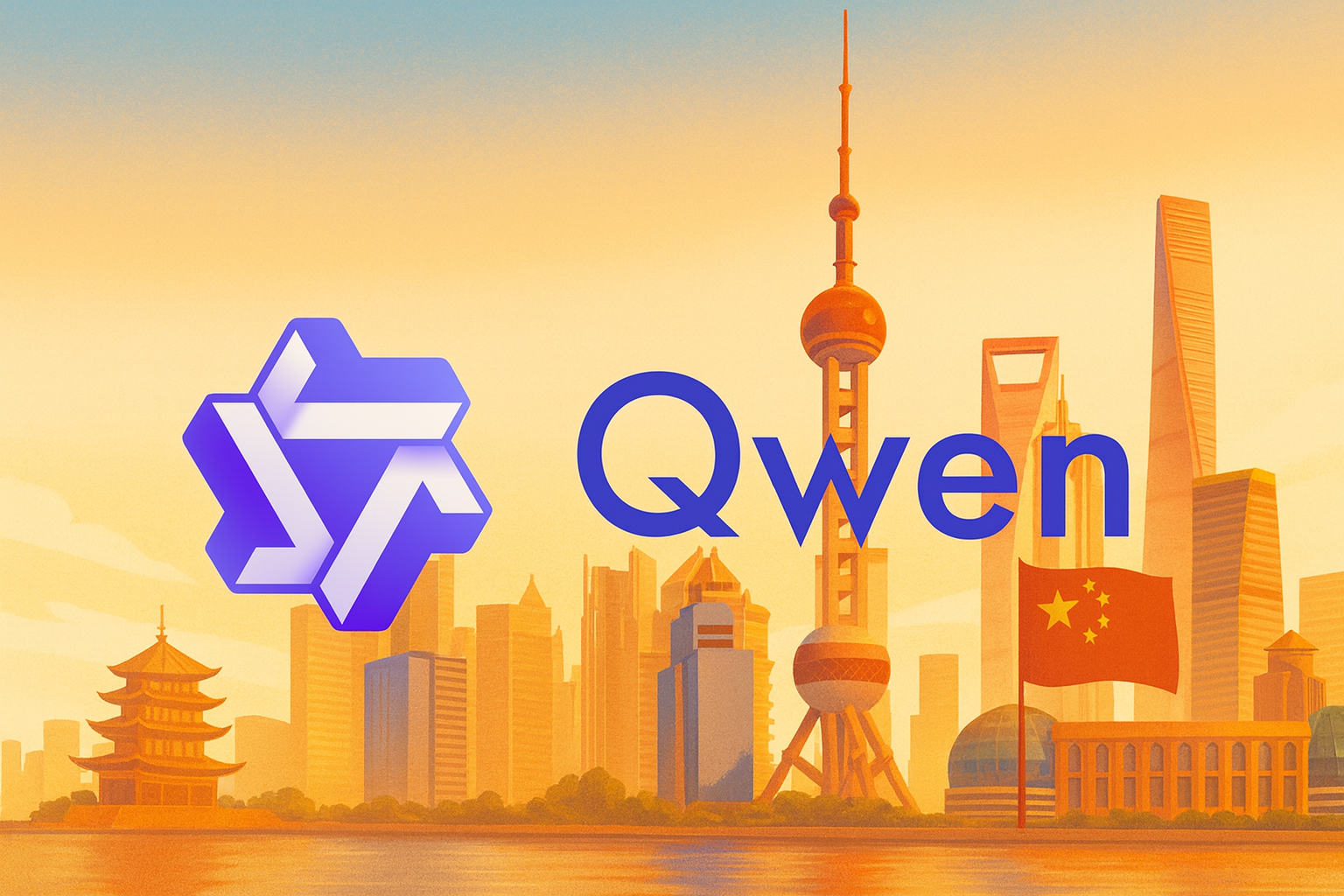
A Meteoric Debut for Qwen
Alibaba’s freshly launched Qwen app has crossed 10 million downloads in just its first seven days — a staggering adoption rate that places it among the fastest-growing AI applications globally. The explosive start signals more than consumer interest. It marks Alibaba’s transition from infrastructure giant to serious AI contender in the public arena.
Qwen Isn’t Just Another Chatbot
At the core of Qwen’s early success is its engine: the Qwen model family, developed in-house by Alibaba. These large language models (LLMs) are multimodal — capable of processing not just text, but also images, audio, and potentially video. Unlike other AI tools that remain sandboxed in niche applications, Qwen is designed as a true all-in-one assistant.
From drafting documents and summarizing reports to answering questions and managing multimedia tasks, Qwen is built to be useful — not just entertaining. And critically, it launched with a free-access model, eliminating the subscription paywall that often hinders adoption in early-stage AI apps.
From E-Commerce to Everyday AI
This launch represents a clear strategic pivot for Alibaba. Historically known for e-commerce dominance and its powerful cloud infrastructure (via Alibaba Cloud), the company is now positioning itself as a top-tier player in the AI space — not just at the backend, but at the consumer-facing layer.
Qwen is not just a product — it’s a platform play. It ties into Alibaba’s cloud resources, shopping ecosystem, productivity tools, and eventually, financial services. By releasing it as a standalone, viral consumer app, Alibaba is laying the groundwork for a much bigger AI ecosystem play.
Global AI Ambitions, Starting in Asia
While Qwen’s initial rollout is concentrated in China and Southeast Asia, there are clear signs Alibaba intends to push the app globally. With Western alternatives like ChatGPT, Claude, and Gemini facing geopolitical and regulatory barriers in some regions, Qwen could capitalize on being both regionally accessible and locally optimized.
Additionally, the app’s early traction reflects strong demand for AI solutions tailored to regional languages, customs, and ecosystems. As Chinese tech continues to look outward, Qwen may become a cultural as well as a technological export — one capable of competing head-to-head with the biggest names in global AI.
The Next Phase: Monetization and Market Power
Crossing 10 million downloads in a week is only the first milestone. The real test lies in retention, monetization, and integration. Alibaba will now focus on converting casual users into power users, offering advanced features, integrating payments, cloud-based services, and potentially leveraging the app to strengthen its broader commercial footprint.
There is already speculation that Qwen could evolve into the “WeChat of AI” — a super-assistant that combines messaging, productivity, shopping, and finance in a single intelligent interface. If that vision materializes, Alibaba may have just positioned itself as the most powerful AI consumer company outside the West.
Final Thought
The Qwen launch is not just about downloads. It’s about direction. Alibaba has made its move — not with hype or vague roadmaps, but with a working, useful, and widely adopted AI assistant. The global AI race is officially more competitive than ever.
-

 AI Model2 months ago
AI Model2 months agoHow to Use Sora 2: The Complete Guide to Text‑to‑Video Magic
-

 AI Model4 months ago
AI Model4 months agoTutorial: How to Enable and Use ChatGPT’s New Agent Functionality and Create Reusable Prompts
-

 AI Model5 months ago
AI Model5 months agoComplete Guide to AI Image Generation Using DALL·E 3
-

 AI Model5 months ago
AI Model5 months agoMastering Visual Storytelling with DALL·E 3: A Professional Guide to Advanced Image Generation
-

 AI Model3 months ago
AI Model3 months agoTutorial: Mastering Painting Images with Grok Imagine
-

 News2 months ago
News2 months agoOpenAI’s Bold Bet: A TikTok‑Style App with Sora 2 at Its Core
-

 AI Model7 months ago
AI Model7 months agoGrok: DeepSearch vs. Think Mode – When to Use Each
-

 Tutorial2 months ago
Tutorial2 months agoFrom Assistant to Agent: How to Use ChatGPT Agent Mode, Step by Step
